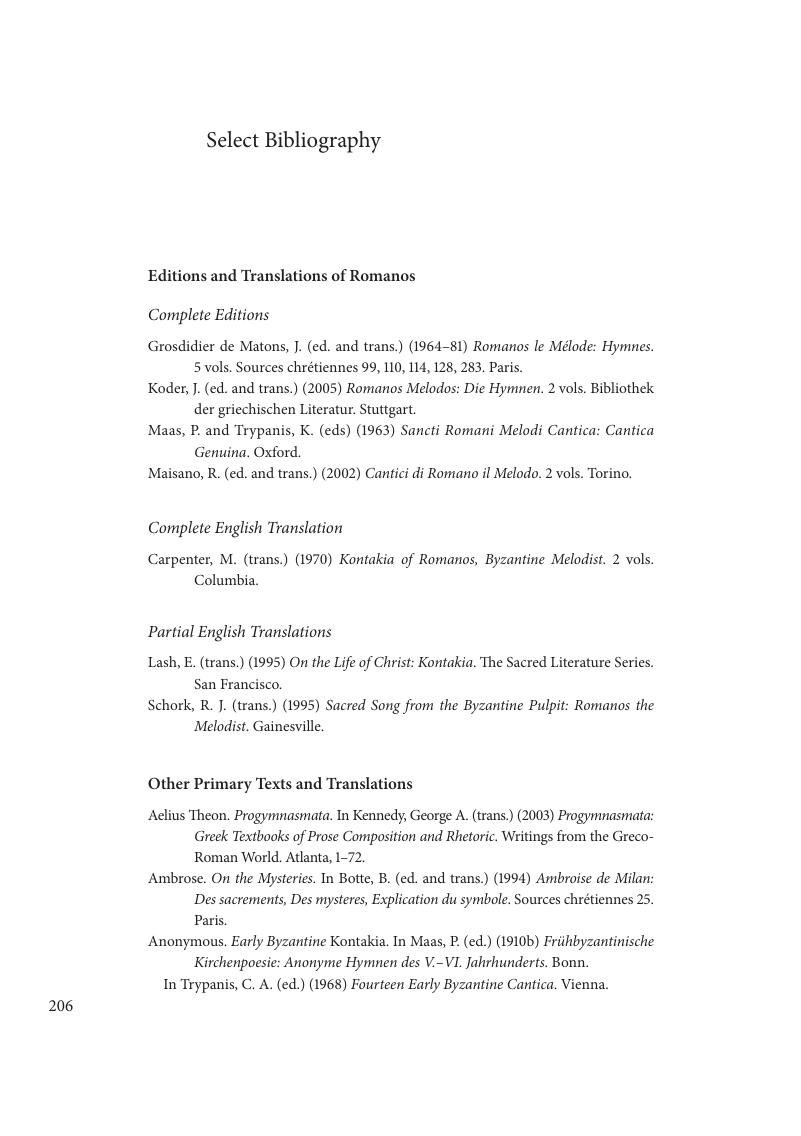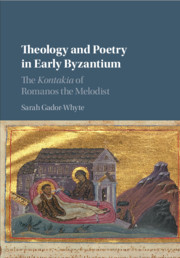Book contents
- Theology and Poetry in Early Byzantium
- Theology and Poetry in Early Byzantium
- Copyright page
- Dedication
- Contents
- Preface
- Introduction
- 1 On the Passion of Christ
- 2 The Second Adam: A Typology of Salvation
- 3 The Second Creation: A New Reality for Christians
- 4 The Second Coming: A Theology of Time and Liturgy
- On the Resurrection IV: Conclusions and Beyond
- Select Bibliography
- Index of Biblical Passages
- General Index
- References
Select Bibliography
Published online by Cambridge University Press: 20 May 2017
- Theology and Poetry in Early Byzantium
- Theology and Poetry in Early Byzantium
- Copyright page
- Dedication
- Contents
- Preface
- Introduction
- 1 On the Passion of Christ
- 2 The Second Adam: A Typology of Salvation
- 3 The Second Creation: A New Reality for Christians
- 4 The Second Coming: A Theology of Time and Liturgy
- On the Resurrection IV: Conclusions and Beyond
- Select Bibliography
- Index of Biblical Passages
- General Index
- References
Summary

- Type
- Chapter
- Information
- Theology and Poetry in Early ByzantiumThe Kontakia of Romanos the Melodist, pp. 206 - 229Publisher: Cambridge University PressPrint publication year: 2017



